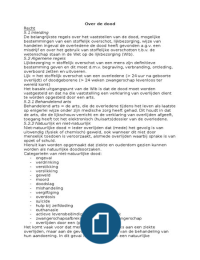Growing Conditions & Distribution:
Historical Production & Trade:
o Temperate, warm climates with clear sunny days & ~35°C (long-day
plant) 18th Century ‘Silk Road’ routes running from Europe – China
o Only moderate amount of water required Britain started Opium Wars in 1800s to fund desire for Chinese tea by smuggling Indian opium into China
o Grows in a variety of soils from slightly acidic to neutral via East India Company = increased rate of addiction among Chinese = carried to America by immigrant
o Native to southeast Europe & Western Asia workers during Gold Rush
o Legal production: India, Turkey, Tasmania (AUS)
o Illegal production: Afghanistan, Colombia, Burma Legal Production & Trade:
Regulated by UN Single Convention on Narcotic Drugs & law enforcement
Medicinal Importance: agencies of individual countries
2000 tons of opium produced annually
Used in Ancient Greek medicine but banned by early Christians as viewed Turkey:
pain as punishment from God that must be endured - 70,000-100,000 small-scale farmers licensed each year to grow opium
Morphine: 10x more powerful > processed opium for severe pain relief poppies
- 600,000 people can earn a living
(eg: end-of-life cancer care), normally injected
- export income of >$US60mil
Codeine: moderate pain relief & cough suppression, normally taken
orally, psychoactive & habit-forming, most commonly consumed opiate Illegal Production & Trade:
in the world
Attractive for organised crime groups as – in great demand, profitable to
All heroin made illegal in 1926 in UK but could previously buy over-
produce, takes up little space, easy & quick transport, long & stable shelf life
counter Key Idea 5a: Case study of a Afghanistan:
Morphine consumption globally increased by >4x in past 2 decades due medicinal plant – Opium Poppy - 90% of world’s illegal opium produced there in 2010 using labs hidden in
to increasing consumption in ACs – more healthy people living longer = mountains & caves typical of local topography
more old-age diseases needs pain medication Fact File: - 2015-2016 = 10% increase in total area under poppy cultivation
- production boomed after bans enforced in other countries & under Taliban
Opium = milky latex produced from control (mujahedin take over) both after Soviet military intervention (1979)
Sustainable Use – reducing illegal trade: unripe seed pods of Papaver & post-takeover in 2021
somniferum - worth >2/3 of entire agricultural sector in 2016
1. Alternative incomes – high value of nuts & fruits + labour absorption (eg: Contains class of alkaloids called - farmers get 1% of international value of heroin but this is more than what
reopening of raisin processing plants in Afghanistan) = good alternative opiates – includes morphine (8-14% they would get with other crops, rest of profits go to crime/militant groups
BUT traditional crop prices have fallen & nearly 200,000 households in by dry weight in raw opium) &
Afghanistan still depended on illicit drug crops in 2011 codeine Sustainable Consumption:
2. Legalise opium production – gained support in EU & Canada since 2011 & How is it produced? 1. Education – prevention focussed on at-risk groups (youth, homeless, prisoners)
will help mitigate global painkiller shortage BUT unlikely to be successful 2. Media campaigns – little effectiveness especially in face of ‘heroin chic’ fashion
in Muslim LIDCs (Afghanistan) as compounding issues of anti-drug 1. Unripe seedpod incised with multi- look in 1990s = youth especially at risk & compounding issue of HIV from
Muslim beliefs & corruption (opium growing banned by Taliban in 2000) bladed tool & opium ‘gum’ allowed needles
to ooze out 3. Treatment & rehab. that encourages people to come forward – must include
3. Crop destruction – LEAST EFFECTIVE; 102 people killed during 2012
2. Fluid scraped off & air-dried counselling, guidance, motivation, medical treatment & social integrations that
poppy eradication campaign as desparate farmers resort to violence to
3. Opium resin placed in bags/rolled are personalised, transit institutions should also be used to integrate people
protect fields from destruction, Taliban insurgents get >US$100mil into balls for sale back into normal life
annually from taxing farmers & drug-producers in areas they control, 4. May be used directly/chemically 4. Criminalisation – carried out by many ACs in 1920s but limited effectiveness as
dealing & trading in Afghanistan is relatively peaceful but wider pattern modified to produce synthetic has just driven consumption underground and made it harder for addicts to
of conflicts including drug-related fighting actually boosts illicit trade opioids (heroin) come forward






